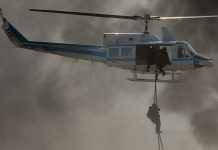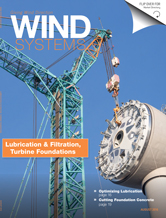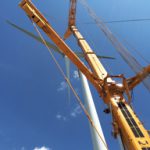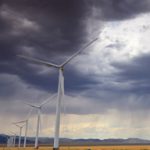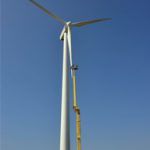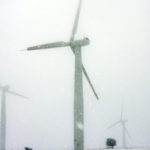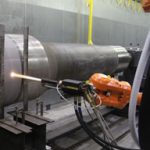Fire prevention is a big land-management issue right now, especially after El Nino drenched most of the nation earlier this year. Weeds are at an all-time high, just as fire season kicks in. The past decade of droughts and catastrophic wildfires have left parched landscapes ill prepared. Project site assessments and maintenance practices should be carefully considered, especially given the large assets at stake on wind projects.
Time for Fire Prevention
A wet growing season was a blessing for farmers, ranchers, and watersheds; however, as the temperature warms up and new vegetation reaches maturity, it’s not exactly a blessing for wind projects.
Dry vegetation is an extreme hazard, especially around potential ignition sources. Owners and operators probably could expect more visits from fire departments this year thanks to El Nino, so make sure you’re in compliance. Most municipalities or county fire departments have vegetation management regulations to remove or mow to a prescribed height before the start of the fire season. It is also important to know inspections are conducted throughout the dry season, and the property must be maintained in order to remain in compliance. Even if property owners abate their property early in the season, there is potential for re-growth.
For some power facilities, managing vegetation around equipment where an ignition source could occur is another best management practice (BMP). Around power transformers and inverters, vegetation should be removed from the ground in a radius of not less than 15 feet.
Clearing this radius will help prevent a fire from starting if the component has a major failure that causes sparks. Inside the substations, fenced parameters should be removed to bare ground or rock. Low-growing vegetation is often encouraged as a means of mitigating dust, but it should be mowed to a height of four inches since this is an effective way to minimize fire hazards while allowing for low ground.
Most fire requirements ask for large defensible spaces for the site, but codes vary by region. Clearing around power poles, turbines, transformer pads, and junction boxes is essential, along with the other obvious places on sites such as roads and buildings. A 10-foot radius around power poles will help prevent a fire from starting if there is any arching due to a failed component. Trees and other large brush should be cleared at least eight feet below a power line.
Maintaining roads also will help as a firebreak if a brush fire starts. Most roads in high-risk fire areas need a 20-foot distance on either side after a project has been constructed, allowing for access and acting as a firebreak.
Using parameter roads and fence lines as a firebreak is a site’s best defense for the spread of fire whether the source is internal or external. Keeping the groundcover and fence line maintained may mean seasonal inspections and services to remove windblown vegetation that has accumulated. Vegetation in fence lines can become a tinderbox, so this has to be cleared throughout the season, too.
Fire safety starts with mowing as one small spark from a mower or a mower’s blade hitting a rock can result in a big fire. Given the high-dollar cost of the site owner’s assets at stake on wind fields, hiring safety-conscious licensed professionals with proven track records is recommended, especially given the chemical and mechanical weed-abatement strategies used.
Tumbleweeds
One of the biggest weed challenges often faced is contending with the dreaded tumbleweeds (also known as Russian Thistle). In the Antelope Valley alone last year, World Wind & Solar (WWS) removed more than 2,000 tons of tumbleweeds — that’s 4 million pounds — from both solar and wind projects. Tumbleweeds can cause serious problems when they get caught in equipment. In order to prevent these problems, WWS tells clients it’s better to be proactive than reactive.
Each tumbleweed can produce up to 200,000 seeds if it’s not removed from the site, and it also contains oils that can be flammable. WWS will mow them while they’re still green and physically remove them from the site. WWS also uses a chemical weed abatement program that requires careful planning and permitting.
There are other professionals to turn to. A great source for assistance in identifying potential fire risk is often times the county fire department. WWS recommends inviting them on site to help with a proper proactive approach.
Reducing Damage
Preparation now will reduce potential damage later. Set up operations and maintenance vendor agreements. Look at your policies: Do they follow best practices discussed here? Can your staff effectively manage the ongoing tasks that need to be performed? Between the wet-winter season, followed by what is expected to be a dry summer season, fires are a looming danger for projects with catastrophic consequences. Given all of these potential devastating effects from improper land management, wind pros should take steps to minimize damage and protect their projects.


















